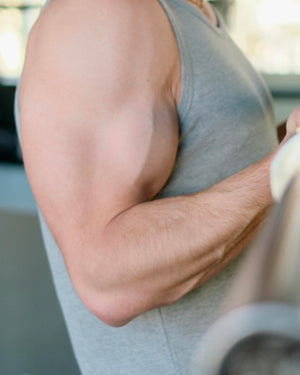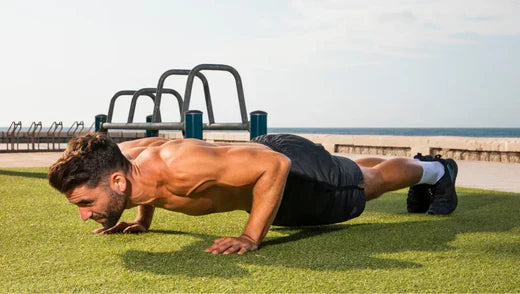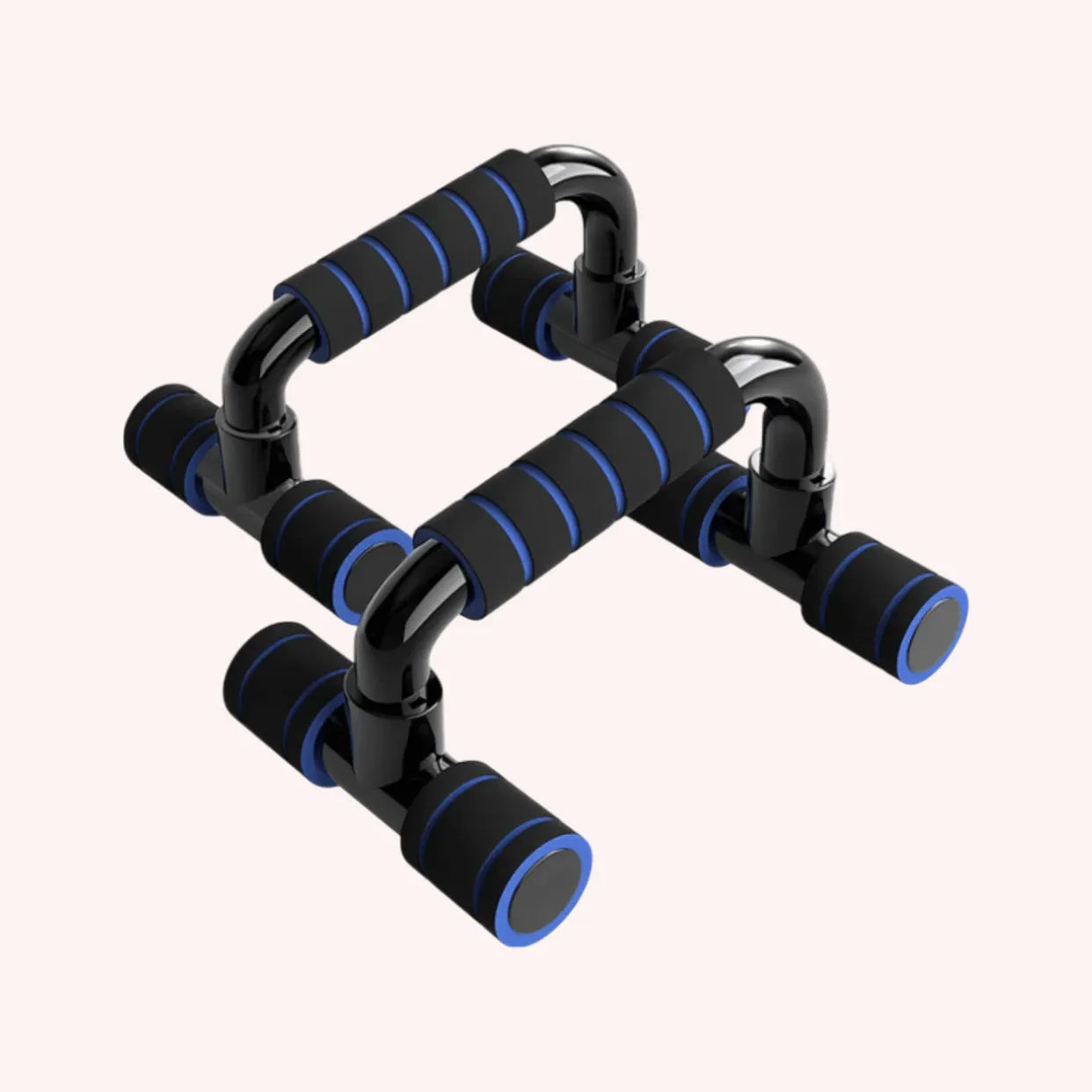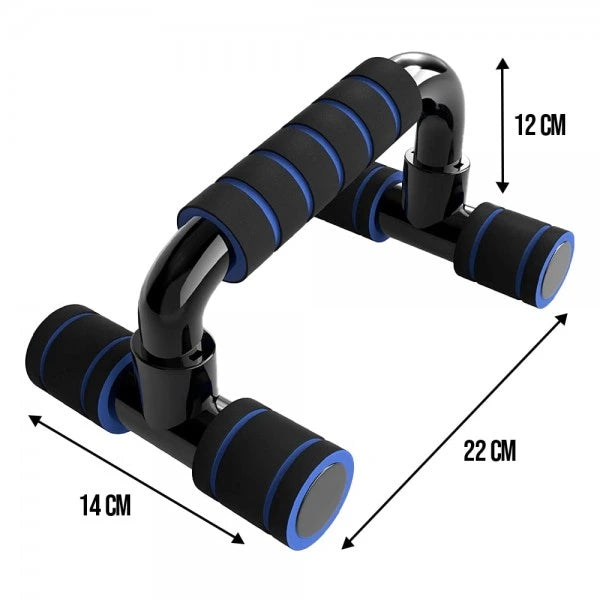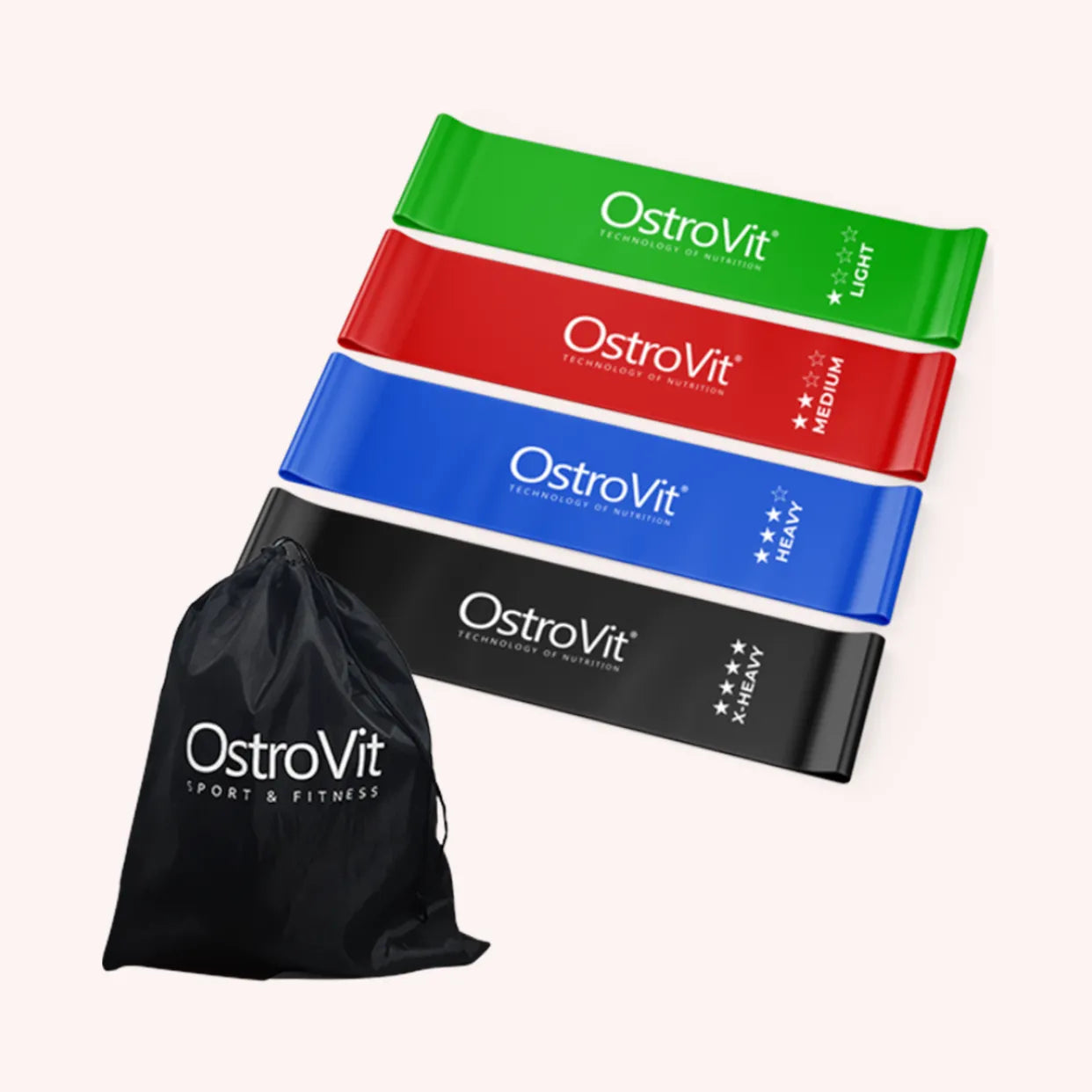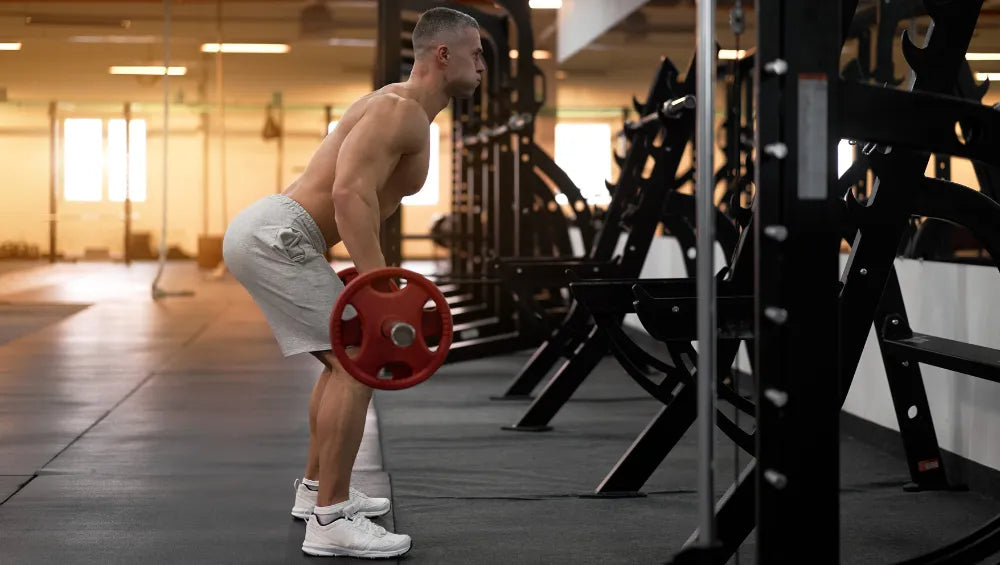Push-ups are one of the most popular and effective strength training exercises. Accessible to everyone, they require no special equipment and can be performed anywhere.
This bodyweight exercise works several muscle groups, mainly those of the upper body , but also stabilizing muscles, guaranteeing a complete workout.
Let's take a closer look at which muscles are engaged when you perform push-ups and how to target them according to your goals.
The Pectorals: The Main Engine of Push-Ups
The pectorals are the muscles most used during push-ups. They consist of two main parts: the pectoralis major and the pectoralis minor . The pectoralis major is a superficial muscle that covers most of the rib cage and helps bring the arms forward. It provides the majority of the power needed to perform push-ups. The pectoralis minor , located below the pectoralis major, is a deep muscle that stabilizes the shoulders during the push-up.
Push-up variations directly influence the intensity of the chest workout. For example, wide-grip push-ups, where the hands are placed beyond shoulder-width apart , place more emphasis on the pectoralis major. Incline push-ups (with feet elevated), on the other hand, target the upper part of the pecs, making them a great exercise for those who want to know how to build upper pecs .
Triceps: Sculpted and powerful arms
The triceps brachii, located at the back of the arms, are also heavily used during push-ups. Their primary role is to extend the elbows, which is essential for lifting. The triceps are composed of three parts: the lateral head, the medial head, and the long head, which work together to push off the ground.
To maximize triceps work, opt for push-ups with your hands close together, such as the diamond push-up. This variation, where your thumbs and index fingers form a diamond under your chest, significantly increases the work on this muscle group . You can also try close-grip push-ups, where your hands are placed under your shoulders, to further strengthen your triceps.
Anterior Deltoids: Well-defined Shoulders
The anterior deltoids, located at the front of the shoulders, play a key role in the pushing motion. These muscles lift the arms forward and help stabilize the body during push-ups. They work closely with the pectorals and triceps to coordinate the movement.
To specifically target the anterior deltoids, try pike push-ups, where your body is at a close to 90-degree angle. This position reduces pectoral involvement and focuses the effort on the shoulders.
The abdominal strap: An essential stabilizing role
Push-ups not only build upper body muscle; they also intensely engage your abdominal muscles.
The abdominal muscles, composed of the transverse, rectus abdominis, and obliques, are constantly engaged to maintain perfect body alignment. Without this engagement, the pelvis would tend to sag, compromising the effectiveness of the exercise and increasing the risk of injury.
To intensify your ab workout, opt for unstable variations, such as push-ups on a ball or suspension straps (TRX). These exercises require extra effort to maintain balance, thus further engaging the deep core muscles.
The stabilizing muscles of the back and legs
Contrary to popular belief, push-ups also work the back and leg muscles, although their role is primarily stabilizing. The erector spinae, a group of muscles located along the spine , are used to keep the back straight throughout the movement. The trapezius and rhomboids stabilize the shoulder blades, while leg muscles, such as the quadriceps and glutes, help maintain a rigid posture.
A great variation to further engage your leg muscles is the single-leg push-up. By lifting one leg, you add instability that forces your lower body's stabilizing muscles to work harder.
Push-up variations for a targeted workout
Push-ups are a versatile exercise that can be adapted for different goals. Here are some variations and their effects on the muscles:
- Classic push-ups: These primarily work the pectorals, triceps, and anterior deltoids, while also engaging the abdominal muscles and back stabilizers.
- Incline push-ups: These target the upper part of the pectorals and the deltoids.
- Decline push-ups: These focus on the lower part of the pecs.
- Diamond push-ups: Ideal for strengthening the triceps.
- Spiderman Push-Ups: These work the abs and obliques, in addition to the upper body muscles.
- Explosive push-ups: Perfect for developing muscular power and explosiveness.
These variations allow you to diversify your sessions and work all the muscle groups in your upper body . You can also check out our article on doing push-ups every day to effectively integrate this exercise into your workout routine.
Supplementation and nutrition for optimal results
The effectiveness of push-ups, like any strength training exercise, also depends on your bodybuilding sports nutrition and recovery. A protein-rich diet is essential to promote muscle repair and stimulate growth. Supplements like whey or protein powder are excellent options to meet your daily protein needs.
To optimize your performance and speed up your recovery, also consider sports supplement solutions. These products can help you maximize the benefits of your push-up and strength training sessions in general.
The importance of technique to maximize results
Proper push-up execution is essential to fully benefit from this exercise and avoid injury. Imperfect technique can limit the engagement of targeted muscle groups, reduce the effectiveness of the exercise, and increase the risk of joint strain, particularly in the shoulders and wrists.
The keys to good posture
- Body alignment: The body must be perfectly aligned, forming a straight line from shoulders to ankles. To achieve this, it is essential to engage the abdominals and glutes. This engagement helps stabilize the spine and prevent the pelvis from sagging.
- Hand position: Hands should be positioned slightly below the shoulders, with fingers pointing forward. Hand spacing varies depending on the push-up variation being performed, but shoulder-width is a good starting point for classic push-ups .
- Elbow movement: The elbows should be slightly tucked inward, forming an angle of approximately 45 degrees to the torso. This position protects the joints and maximizes engagement of the triceps and pectorals.
- Movement control: Descend slowly with controlled speed and ascend smoothly. Avoid sudden movements that can lead to loss of balance or injury.
Common mistakes to avoid
- Pelvic Slump: When your abs aren't engaged enough, your pelvis tends to sag, putting pressure on your lower back. To correct this, remember to engage your abs throughout the movement.
- Elbows too wide: Elbows that are open more than 90 degrees increase the risk of shoulder injury. Keep them close to the body for a safer and more efficient movement.
- Improper hand position: Hands too far forward or back from your shoulders can unbalance your posture and reduce the effectiveness of the exercise.
How to progress safely
To avoid plateauing or overworking your muscles, it's important to take a gradual approach. Here are some steps to improve your technique and endurance:
- Start with proper push-ups: If you're just starting out, focus on knee push-ups or incline push-ups , where your hands are placed on a raised surface, such as a bench. These variations reduce the load on your arms and make the movement easier.
- Gradually increase the intensity: Once you've mastered classic push-ups , explore more complex variations, such as Spiderman push-ups or slam push-ups . These exercises target more muscle groups and improve your explosiveness.
- Vary your exercises: Incorporate different push-up variations into your routine to avoid monotony and work all of your upper body muscles. Alternate between wide-grip push-ups , diamond push-ups , and decline push-ups .
- Listen to your body: Allow your muscles time to recover between sessions to avoid overtraining. Check out our guide on how many times a week to effectively plan your workouts.
Benefits of a mastered technique
Proper technique doesn't just optimize your performance. It also promotes balanced muscle development , reduces the risk of injury, and allows you to progress faster. By adopting impeccable form and movement, you can maximize the benefits of push-ups, whether it's developing your pecs, strengthening your triceps, or improving your core stability.
Whether you're a beginner or an experienced athlete, perfecting your technique is an essential step toward achieving your bodybuilding goals. Ready? Now all you have to do is apply these tips and incorporate push-ups into your workout routine!
Frequency and progression: Finding the right balance
To progress with push-ups, it's important to stick to a frequency and intensity that's appropriate for your fitness level. If you're a beginner, start with 2 to 3 sessions per week, performing 3 sets of 8 to 12 repetitions. Gradually increase the number of repetitions and explore variations to continue challenging your muscles.
More advanced exercisers can include push-ups in their daily routine, combining them with other strength training exercises for optimal progression. When planning your workout, it's essential to determine how many times per week you should work your muscles to maximize results while promoting recovery.
Push-ups are a complete and versatile exercise that targets a wide range of muscles, from the pectorals and triceps to the abdominals, deltoids, and back and leg stabilizers. Their simplicity and numerous variations make them an essential ally for all athletes, whether beginners or experienced athletes.
To maximize the benefits of this exercise, incorporate it into a balanced training program and combine it with proper nutrition. With the right supplements and consistent progress, you can quickly see significant improvements in strength, power, and muscle definition.
Sources:
- Westerterp-Plantenga MS, Nieuwenhuizen A, Tomé D, Soenen S, Westerterp KR. Dietary proteins, weight loss, and weight maintenance. Annu Rev Nutr. 2009;29:21-41. doi: 10.1146/annurev-nutr-080508-141056. PMID: 19400750.: https://pubmed.ncbi.nlm.nih.gov/19400750/
- Halton TL, Hu FB. The effects of high protein diets on thermogenesis, satiety and weight loss: a critical review. J Am Coll Nutr. 2004 Oct;23(5):373-85. doi:10.1080/07315724.2004.10719381. PMID: 15466943.: https://pubmed.ncbi.nlm.nih.gov/15466943/
- Cava E, Yeat NC, Mittendorfer B. Preserving healthy muscle during weight loss. Adv Nutr. 2017 May 15;8(3):511-519. doi:10.3945/an.116.014506. PMID: 28507015.: https://pubmed.ncbi.nlm.nih.gov/28507015/
- Westerterp-Plantenga MS, Lemmens SG, Westerterp KR. Dietary protein - its role in satiety, energetics, weight loss and health. Br J Nutr. 2012 Aug;108 Suppl 2. doi: 10.1017/S0007114512002589. PMID: 23107521.: https://pubmed.ncbi.nlm.nih.gov/23107521/
- Pasiakos SM, Cao JJ, Margolis LM, Sauter ER, Whigham LD, McClung JP, Rood JC, Carbone JW, Combs GF Jr, Young AJ. Effects of high-protein diets on fat-free mass and muscle protein synthesis following weight loss: a randomized controlled trial. FASEB J. 2013 Sep;27(9):3837-47. doi: 10.1096/fj.13-230227. PMID: 23739654.: https://pubmed.ncbi.nlm.nih.gov/23739654/



